Trees Birds Mammals Fish Amphibians Reptiles
Wild Algarve
Bookshop
Cerrena unicolor (Bull.) Murrill
Phylum: Basidiomycota - Class: Agaricomycetes - Order: Polyporales - Family: Polyporaceae
Distribution - Taxonomic History - Etymology - Identification - Culinary Notes - Reference Sources
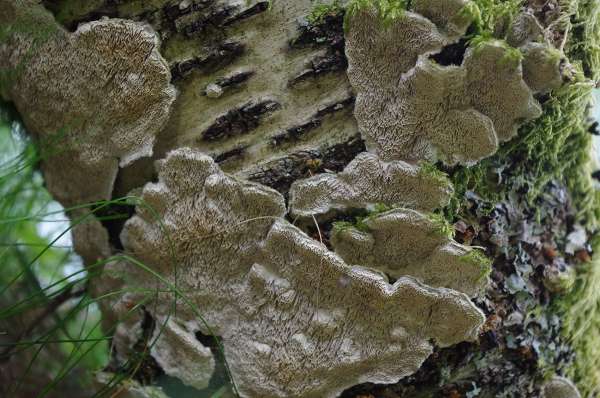
Cerrena unicolor is referred to by some people as the Mossy Maze Polypore (although it is not yet included in the British Mycological Society's list of English Names for Fungi).
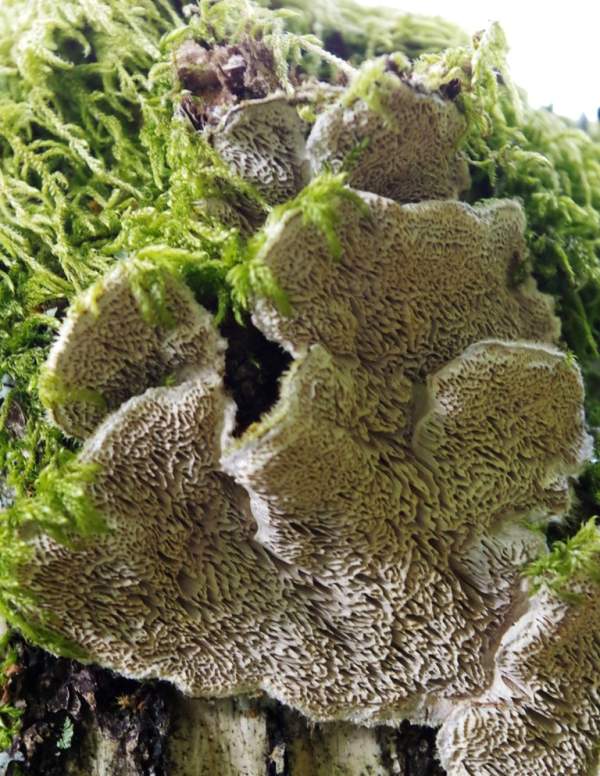
Distribution
Cerrena unicolor is fairly common and widespread in Britain and Ireland. This wood-rotting fungus occurs also throughout mainland Europe and is recorded in many parts of Asia and North America.
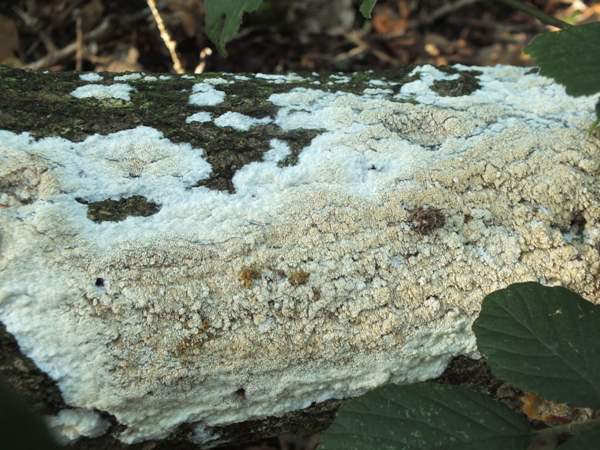
Taxonomic history
Cerrena unicolor was described scientifically in 1785 by French mycologist Jean Baptiste Francois Pierre Bulliard, who created its basionym when he gave it the scientific binomial name Boletus unicolor. It was American mycologist William Alphonso Murrill (1869 - 1957) who in 1903 transferred this species to the genus Cerrena and established its widely-accepted scientific name as Cerrena unicolor.
The many synonyms of Cerrena unicolor include Boletus unicolor Bull., Agaricus cinereus (Pers.) E. H. L. Krause, Antrodia incana (P. Karst.) P. Karst., Polyporus latissimus Fr., Sistotrema cinereum Pers., Cerrena cinerea (Pers.) Gray,Coriolus unicolor (Bull.) Pat., and Trametes unicolor (Bull.) Pilát.
Etymology
The specific epithet unicolor comes from Latin and means 'of one colour'.
Identification guide
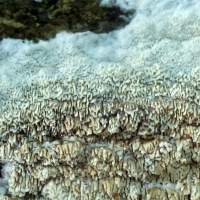 |
Cap
When in bracket form the upper surface is smooth and velvety, semicircular or kinney-shaped, 3-10cm across, often stained green by algae. when on the underside of timber, often resupinate so that only the fertile surface is visible. Maze-like or slotted pores eventually become tooth like and up to 4mm deep; they are initially whitish or pale brown, eventually darkening away from the pale outer edge. |
| |
Spores
Elongated-ellipsoidal or cylindrical, smooth, 5-7 x 2.5-4µm; inamyloid.
Spore print
White. |
Odour/taste |
Not distinctive. |
Habitat & Ecological role |
Annual; saprobic on dead hardwoods, causing white rot. |
Season |
New fruitbodies produce spores from late spring to autumn, but these tough polypores tend to persist throughout the year. |
Similar species |
When in bracket form, Trametes versicolor is similar if viewed from above, but its fertile surface has tiny roundish pores and narrower spores. |
Culinary Notes
The whitish flesh of this polypore fungus is much too tough to be of any culinary interest.
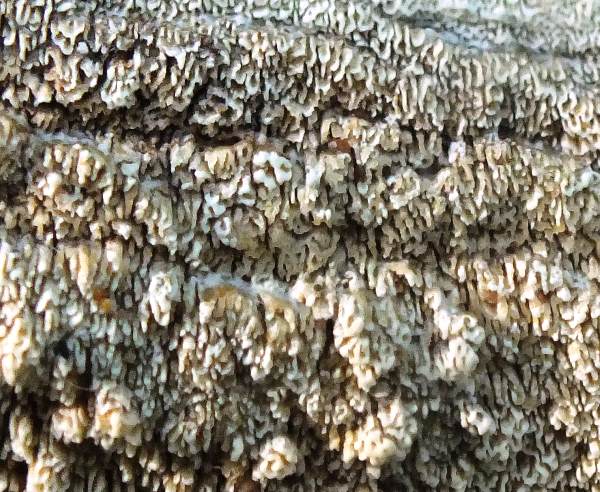
Reference Sources
Mattheck, C., and Weber, K. (2003). Manual of Wood Decays in Trees. Arboricultural Association
Pat O'Reilly (2016). Fascinated by Fungi, First Nature Publishing
BMS List of English Names for Fungi
Paul M. Kirk, Paul F. Cannon, David W. Minter and J. A. Stalpers. (2008). Dictionary of the Fungi; CABI.
Taxonomic history and synonym information on these pages is drawn from many sources but in particular from the British Mycological Society's GB Checklist of Fungi.
Acknowledgements
This page includes pictures kindly contributed by Arnor Gullanger.
Top of page...
Fascinated by Fungi. Back by popular demand, Pat O'Reilly's best-selling 450-page hardback book is available now. The latest second edition was republished with a sparkling new cover design in September 2022 by Coch-y-Bonddu Books. Full details and copies are available from the publisher's online bookshop...